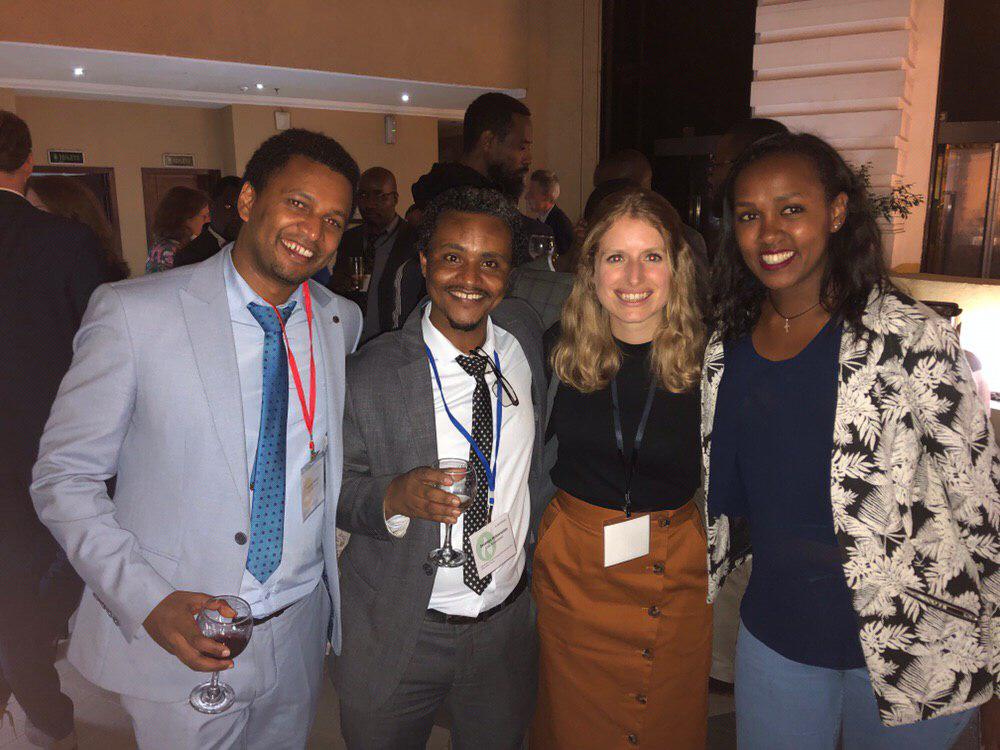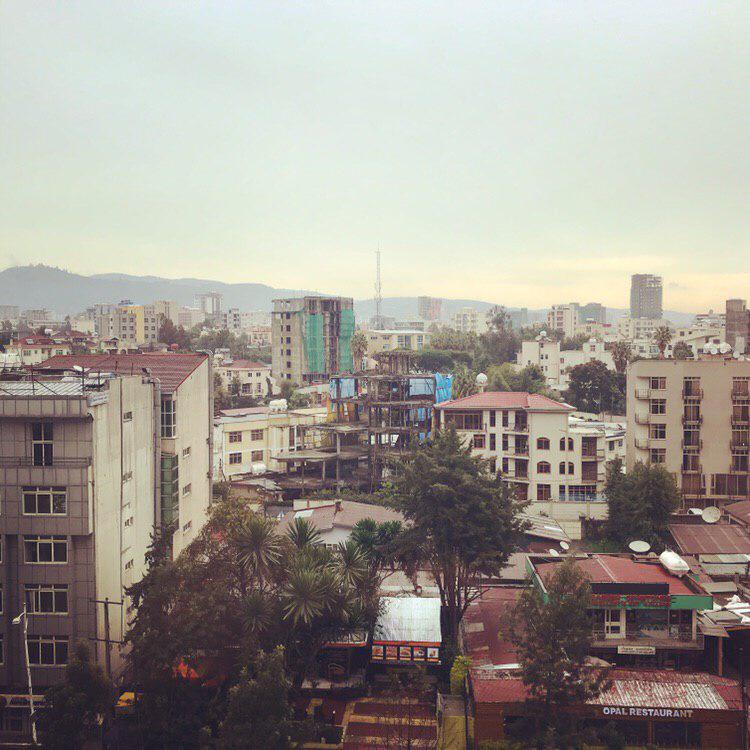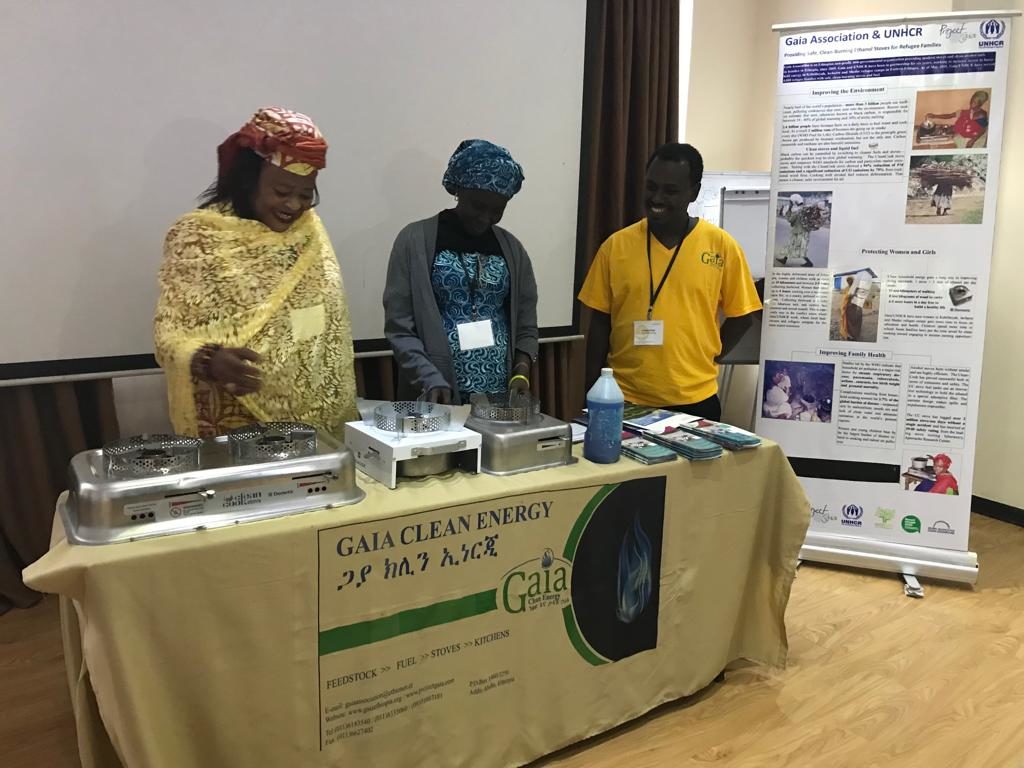News: Takeaways from the first Humanitarian Energy Conference, Addis Ababa
Alexandra Milano, Tags: adaptation project, adaptation projects, clean energy, climate finance, energy access, ethiopia, Gaia Clean Energy, humanitarian energy access, Humanitarian Energy Conference, NGOs, Project Gaia

I recently attended the first Humanitarian Energy Conference (HEC) in Addis Ababa, Ethiopia. The conference was attended by a diverse group of stakeholders from humanitarian agencies, the private sector, government, NGOS, donor organisations and researchers. The HEC was organized by the Global Plan of Action (GPA) and Safe Access to Fuel and Energy (SAFE) Working Group. The GPA is a relatively new initiative launched to accelerate the delivery of affordable, reliable, sustainable, and modern energy services to displaced persons. Operating in the same space, the SAFE Working Group is a consortium of humanitarian and NGO actors aiming to improve the response to the energy needs of displaced persons. The aim of the HEC was to convene stakeholders to facilitate collaboration, knowledge exchange and discussion of best practices to deliver on the missions of both organisations.

My background is in energy access and I gained experience with the humanitarian sector in particular during my time as a project manager Project Gaia, an NGO dedicated to clean cooking. I’ve since followed the space closely and had the opportunity to conduct a landscape study for the Moving Energy Initiative (MEI) last year. At the HEC, several themes that were present in my previous work were important discussion points. There is an acute lack of funding available for delivering energy access to persons affected by displacement, which necessitates innovative approaches to financing. The role of the private sector is often debated, with some arguing it is unethical to invite the private sector into the space, while others are convinced that it is essential to the efficient delivery of services. Climate finance is rarely included in these conversations and yet has the potential to address some of the challenges facing humanitarian agencies.
Lack of funding
The delivery of energy services in humanitarian agencies faces a number of challenges, perhaps the most formidable being the absence of funding. The absence of funding was discussed in several sessions I attended and this problem was mentioned in almost every discussion I had with implementers. This issue prevents programs from reaching scale and meeting the urgent needs of displaced persons.
There are a number of reasons for the funding shortfall in the sector. Firstly, humanitarian and donor budgets alike are outpaced the scale of global displacement. Ranya Sherif, the country representative for UNHCR-Uganda noted that her budget had been cut by 40%. The MEI estimates that globally there are 135.3 million people who are in need of aid. This number is likely to continue to grow. Another issue is that humanitarian agencies, which are dependent on annual donor funding, are only able to budget for the short-term. This prevents agencies from making longer-term investments, which may prove to be less costly further down the line. Another issue, though one that is arguably improving, is the visibility of energy as a humanitarian issue. Several years ago energy was more of a niche concern rather than a legitimate intervention area. While energy now enjoys much greater visibility, it still must compete with other clusters for resources.
The role of the private sector
In the absence of funding, stakeholders are seeking alternatives to traditional donor-driven funding. Donor assistance is moving away from a traditional procurement model to a market-based approach. One result of this shift is cash-based assistance. This approach, which is being implemented by UNHCR and other donors in refugee camps, can be broken down into two categories: cash transfers and vouchers. Cash transfers are either conditional or unconditional; conditional means that cash can only be spent on certain goods whereas recipients are welcome to spend unconditional cash transfers as they wish. Similarly to conditional cash transfers, vouchers, on the other hand, are only able to be spent on specified goods.
My former colleagues, Wubshet Tsehayu and Desalegn Getaneh of Gaia Clean Energy discussed the benefits of this approach in separate sessions at HEC. Cash-based assistance, together with grants, has enabled Gaia to establish a stove and fuel-selling cooperative in Assosa refugee camp. The cooperative is comprised of refugees and members of the host community who sell stoves and fuel to residents of both the camp and surrounding community. The presence of cash-based assistance kickstarted this market and enabled refugees to access cooking energy, while the grant money establishment of the cooperative and provided much-needed working capital.

Gaia Clean Energy at the Action Village, where different clean energy products were displayed
Another result of the shift increased involvement from the private sector. The private sector was well-represented at the conference though their presence can be controversial. More than once, in sessions and in side conversations, participants questioned the ethics of inviting the private sector into humanitarian settings, particularly camps. However, several key figures from UNHCR, the Clean Cooking Alliance and FAO expressed their support for increasing the role of the private sector in energy service delivery. Clean Cooking Alliance CEO Dymphna van der Lans highlighted the agility of the private sector, noting that it is able to spring into action more quickly than humanitarian actors and offers innovative solutions. She identified a lack of understanding of how to engage with agencies as an obstacle to this engagement, something which was echoed by private sector actors.
This debate is why I find the Gaia model so interesting. The Gaia model uses grant money and donor support to establish a business that comprised of members of the community it serves. Donor support benefits displaced persons and the community hosting them. The profits made from the business are then reinvested back into the same community. Do the same concerns apply when a business is community-owned and operated?
What about climate finance?
Where does climate finance fit into the search for alternative funding? Currently, climate finance remains relatively untapped by humanitarian agencies. Based on the discussions I had with participants at the conference, there is some concern about the time required to access funding. This is certainly a legitimate concern—the project preparation process can be arduous and then if a project is successful, disbursement of funds is not immediate.
However, climate finance can be useful in developing longer-term programs that traditional agency budgets may not be able to support. Tackling the issue of energy access for people affected by displacement will take more time, more money and longer-term planning. Where possible, humanitarian aid should be implemented in accordance with and complement the development priorities of host countries. There is a shifting consensus that aid should benefit both displaced persons and the communities in which they live. Climate finance can support this type of work and in fact, requires applicants to demonstrate country ownership or endorsement. Depending upon the context, it could be an excellent avenue for bridging the gap between humanitarian aid and development.
What next?
It’s clear that there’s an urgent need for innovative financing in the humanitarian energy access space. What’s less clear is where the money should come from. Should it come from donors investment in new delivery models? Should the private sector be encouraged to intervene? Can climate finance help?
Climate finance may be the less obvious option but there is real potential for it in this space. It could transform the way that humanitarian aid is delivered by advancing longer-term, sustainable solutions.
Let’s talk
If this is something you’re interested in or would like to learn more about, please don’t hesitate to get in touch with us at amy@ecoltdgroup.com and you can learn more about what E Co. does here.
Join the conversation by posting a comment below. You can either use your social account, by clicking on the corresponding icons or simply fill in the form below. All comments are moderated.